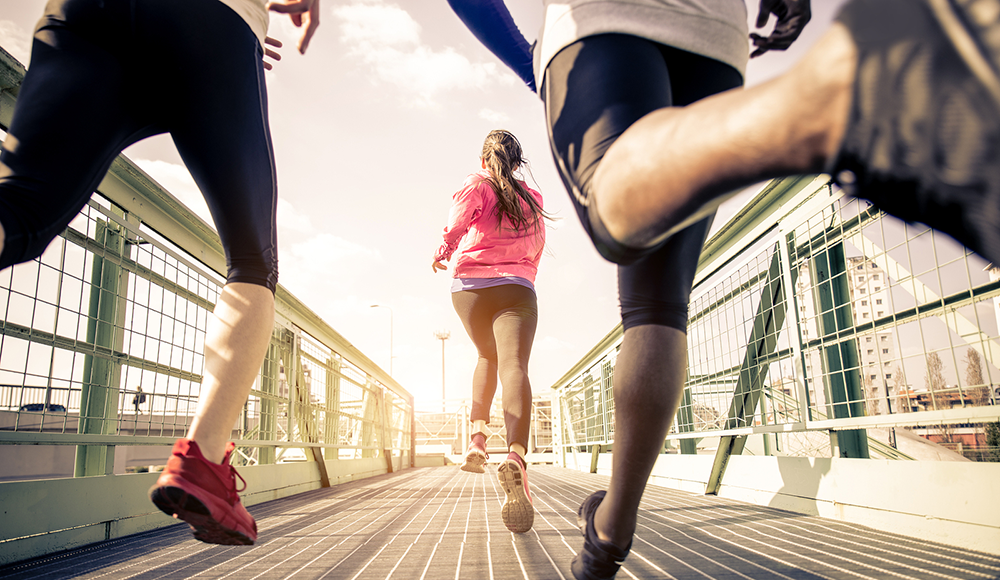Getting Active: Physical Fitness Is Good for You and Good for Business

“Physical fitness is not only one of the most important keys to a healthy body, it is the basis of dynamic and creative intellectual activity. Our growing softness, our increasing lack of physical fitness, is a menace to our security.” – John F. Kennedy
We just returned from two weeks in Europe exploring the Mediterranean and enjoying Rome, Florence, and Barcelona. We walked easily 5-10 miles a day.
One night, a friend and client posted a picture on Facebook. She was in Paris. The picture showed a plate of delectable macaroons with the caption, “How do Parisian women have these wonderful treats and stay so skinny?”
I replied, “They walk 10 miles a day and smoke a pack of cigarettes!”
One of the reasons it is so rare to see obesity in Europe is that people walk everywhere. In my neighborhood, however, we think nothing of driving an Escalade to the corner to buy a paper.
In the years since President Kennedy made the quote that opens this post, the average American has gained about 25 pounds. During that time, we built roads, bought millions more cars, and started watching a lot more television. Meanwhile, our rates of mental illness have also skyrocketed, with 1 in 10 Americans experiencing mental illness at some point in their life.
Our mental health – especially our sense of optimism – is directly tied to physical fitness. My friend and colleague Julie Lafond is one of the country’s leading fitness professionals. She says that modern human beings require “physical activity to keep their sanity. We were not designed to sit in our heads twenty-four hours a day; rigorous physical activity is the one thing that gives our brains a break.”
One of my clients, Michelle Seidel, is a top-tier consultant with Towers Watson. Seidel has led numerous multinational change projects in human resources. She has a terrific vantage point on where the workplace is headed with wellness and physical fitness.
“In the first few years after joining Towers Watson, I took a rather traditional approach to success by making personal sacrifices, including sacrificing my fitness,” Seidel says. “My days were consumed by long hours at work and my need for sleep. I excelled professionally. In hindsight, I would have been even more successful had I maintained my fitness. My self-esteem plummeted and I lost the energy to have a full, balanced life.”

What happened after that?
“I have fallen in love with feeling strong,” Seidel says. “Physical strength has given me an incredible sense of confidence and well-being. As a result of being fit, I get more done in a shorter period of time. I am a more effective spouse, colleague, and mentor. I am more grounded, enthusiastic, and happy. These are all characteristics we look for in the best team members.”
Seidel works with many large employers at Towers Watson, and she has seen the vast majority 0f those clients adopt workplace wellness programs.
“Every employer I am aware of has an established or growing wellness program,” Seidel says. “In the last 50 years, we took so many steps backward. Today, we are facing healthcare reforms that literally force the issue of creating a stronger and healthier workforce. For example, in the more traditional organizations, we find exercise and wellness incentive programs. In tech-savvy organizations, software and apps are being used to transform how we measure and encourage the well-being of organizations and individuals.”
And, finally, here are a few suggestions to help you improve your own overall wellness:
- Instead of driving to the corner, walk to the corner.
- Instead of eating a big meal at lunch, consider going on a walk after having a quick and healthy meal. Get a coworker to go with you.
- Consider using a wearable device like a Fitbit. The results will almost always surprise you!
David Harder is the founder of Inspired Work.

